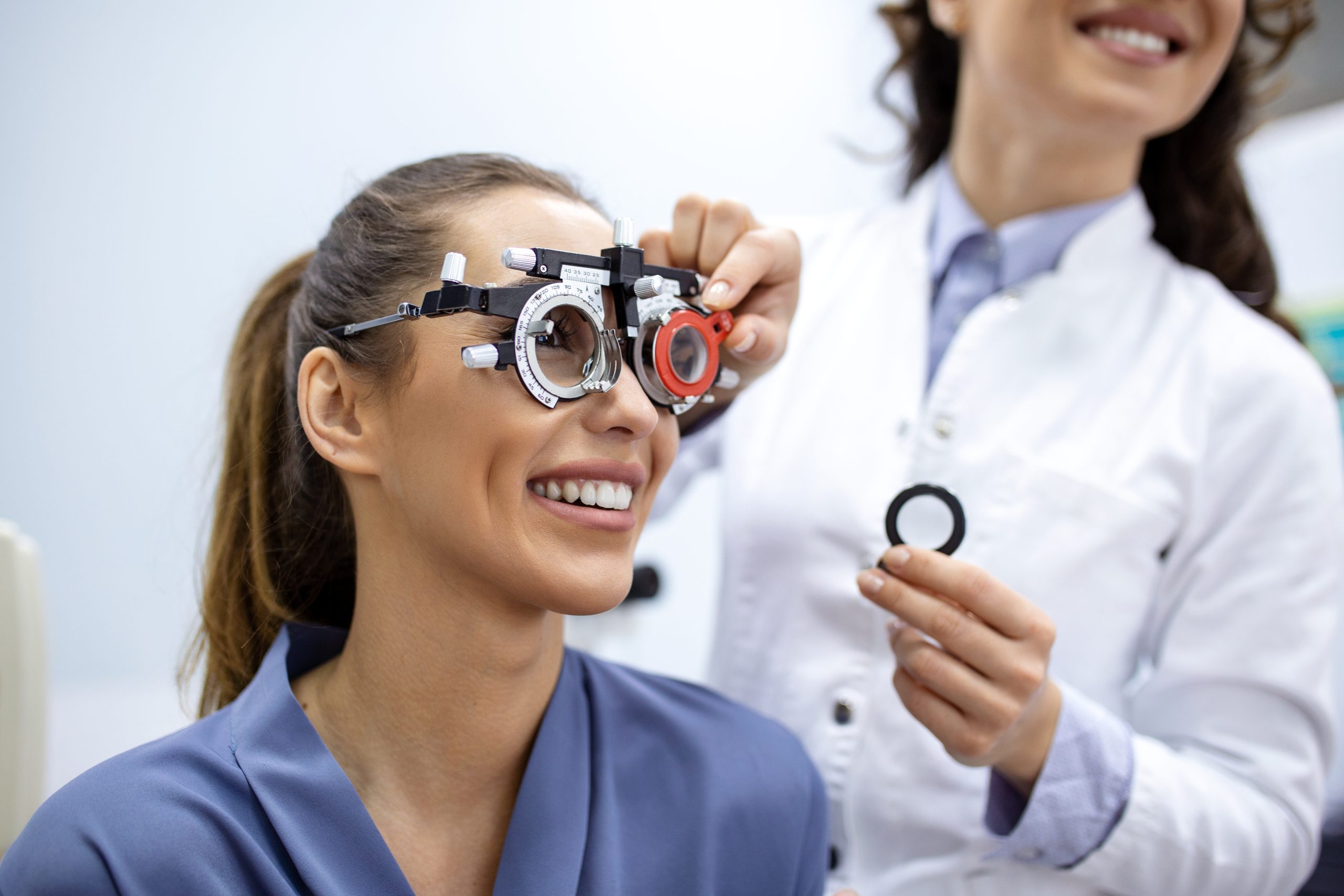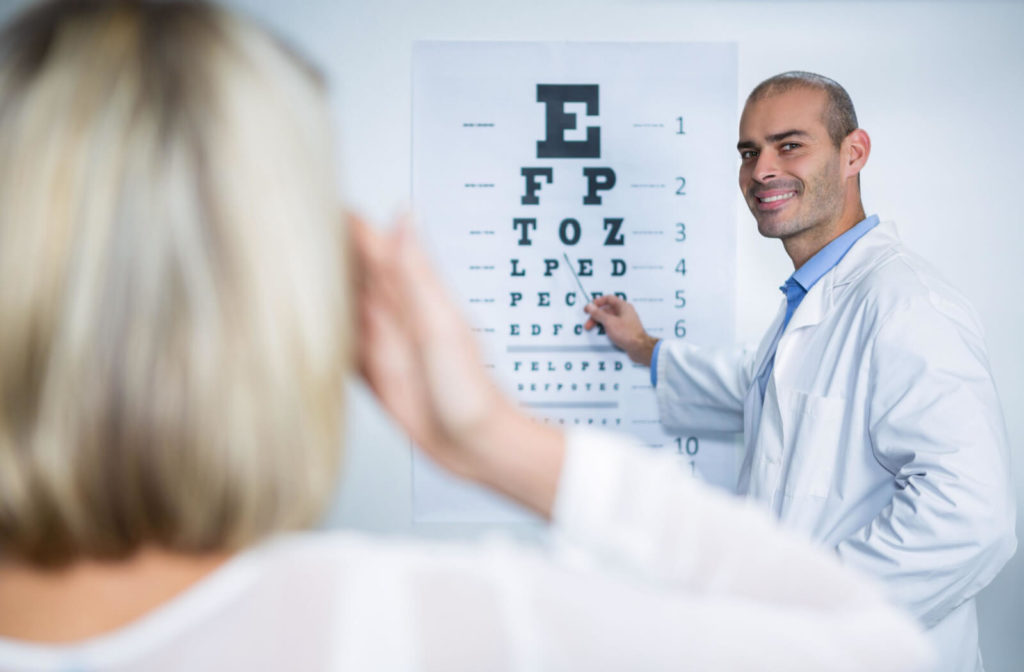Exploring the current Technological Developments in Optometry and What They Mean for Eye Doctors
From the precision of Optical Comprehensibility Tomography to the nuanced insights offered by AI-driven analysis tools, these technologies are setting new standards in individual assessment and therapy. As these improvements penetrate the practice, eye doctors are encountered with the difficulty of welcoming these devices to boost client outcomes.
Advancements in Diagnostic Tools
Progressing the field of optometry, technologies in diagnostic tools have actually transformed the means eye treatment specialists evaluate and detect eye problems and visual impairments. The past years has seen considerable technological improvements, enabling even more thorough and exact analyses. Optical Comprehensibility Tomography (OCT), for example, supplies high-resolution cross-sectional pictures of the retina, enabling the early detection of diseases such as glaucoma and age-related macular deterioration. This non-invasive imaging technique has become important in contemporary optometric method.
Another secret innovation is the intro of advanced corneal topography systems, which map the surface area curvature of the cornea with accuracy. These devices are especially valuable for suitable get in touch with lenses and detecting corneal disorders. In addition, electronic retinal imaging has transformed conventional ophthalmoscopy, using in-depth, breathtaking views of the retina that promote extensive aesthetic assessments.
The development of wavefront aberrometry has actually additionally been essential, making it possible for the evaluation of refractive errors with unrivaled accuracy (Eye Doctor). This technology aids in tailoring rehabilitative lenses and boosting surgical outcomes for refractive surgeries. Collectively, these diagnostic innovations encourage optometrists to provide remarkable patient care, making sure early treatment and customized treatment strategies, ultimately improving visual health and wellness results
AI in Person Management
Structure on the structure of advanced analysis tools, the consolidation of expert system (AI) in patient management stands for a transformative leap for optometry. AI systems are progressively used to enhance performance, accuracy, and personalization in individual treatment. By examining huge amounts of data, AI can determine patterns and anticipate possible eye conditions, allowing eye doctors to customize treatments better. This capacity is crucial in taking care of chronic eye illness such as glaucoma and diabetic person retinopathy, where early detection and continual surveillance are vital.
Additionally, AI-driven platforms promote structured patient communications and management processes. Automated scheduling, virtual assessments, and personalized follow-up plans not just boost individual complete satisfaction however also maximize time monitoring for professionals. These systems can triage people based on the necessity of their conditions, making certain that those in important need receive prompt attention.
Moreover, AI improves decision-making by giving eye doctors with evidence-based suggestions and therapy paths. By integrating data from electronic wellness documents, AI devices use insights that inform professional decisions, lowering the risk of mistakes and enhancing individual results. As AI continues to develop, its role in client management will likely increase, reshaping the landscape of optometric treatment.
Advancements in Retinal Imaging
In the realm of optometry, retinal imaging has witnessed remarkable technical developments that are boosting analysis capacities and client treatment. Advancements such as Optical Coherence Tomography (OCT) and fundus digital photography have actually transformed just how optometrists examine the retina and envision.
Improved imaging techniques like OCT angiography are further refining diagnostic accuracy. This non-invasive strategy maps blood circulation in the retina, using critical understandings right into vascular health and wellness without the need for dye injections. In addition, adaptive optics innovation is being integrated right into retinal imaging systems to remedy ocular aberrations, delivering extraordinary photo clarity. Such innovations facilitate the identification of min retinal adjustments that can symbolize illness development.
In addition, advancements in man-made knowledge are augmenting retinal imaging by enabling automatic analysis of large datasets. These systems assist eye doctors in determining patterns a sign of pathology, thus enhancing analysis precision and effectiveness. Jointly, these developments are changing retinal imaging into a keystone of modern-day eye care, improving end results and increasing healing opportunities.
Teleoptometry's Expanding Function
Teleoptometry is significantly becoming a vital element of eye care, driven by advancements in data and diagnostic tools. As optometry accepts digital change, teleoptometry assists in remote appointments, permitting eye doctors to expand their solutions beyond traditional boundaries. This is specifically advantageous in underserved and country locations where accessibility to specialized eye care is commonly limited. By leveraging high-resolution video clip conferencing and progressed retinal imaging, eye doctors can carry out extensive eye examinations from afar, guaranteeing timely medical diagnosis and therapy.
The integration of expert system (AI) further boosts teleoptometry, allowing the analysis of aesthetic information and assisting in the detection of eye conditions such as glaucoma and diabetic retinopathy. AI-powered formulas can quickly analyze complicated imaging data, providing eye doctors with valuable understandings that boost scientific decision-making.
Additionally, teleoptometry supports connection of care with smooth combination with electronic health records (EHRs), enabling eye doctors to maintain extensive patient backgrounds. When seeking advice from with different experts., this guarantees that individuals receive tailored and consistent care also.
Despite these advantages, obstacles remain, consisting of making certain data safety and managing client expectations. Nevertheless, teleoptometry represents a substantial stride in the direction of more obtainable, effective, and patient-centered eye treatment. As technology advances, its duty is positioned to increase better.

Future Fads in Eye Treatment
A myriad of cutting-edge trends is readied to reshape the future of eye treatment, driven by technical innovations and the evolving requirements of clients. One significant trend is the integration of man-made knowledge (AI) in diagnostics, which guarantees to improve the precision and effectiveness of eye exams. AI formulas can examine large quantities of data from retinal photos, possibly finding conditions like diabetic retinopathy and glaucoma earlier than traditional methods.
Moreover, individualized medication is obtaining grip in optometry, with genetic testing educating tailored therapy plans. This approach intends best site to enhance individual results by tailoring treatments to individual hereditary profiles. Wearable technology, such as clever get in touch with lenses, is likewise coming up, offering real-time surveillance of intraocular pressure or glucose levels, thus giving constant insights into description eye and systemic health.
The adoption of increased fact (AR) and virtual fact (VR) in training and client education and learning is another arising trend. These innovations offer immersive experiences that can boost understanding and skills both for eye doctors and patients. As these patterns evolve, eye doctors should remain abreast of technological developments to provide sophisticated treatment, making certain better person results and contentment in the dynamic landscape of eye treatment.
Conclusion

Jointly, these diagnostic advancements equip eye doctors to provide exceptional patient treatment, making certain early treatment and customized therapy approaches, ultimately boosting visual health end results.

As these technologies continue to progress, eye doctors must adapt and integrate them into practice, eventually enhancing operations efficiency and boosting the requirement of eye treatment supplied to people.